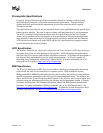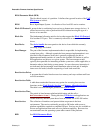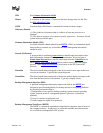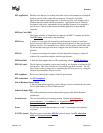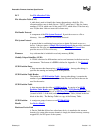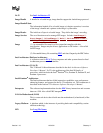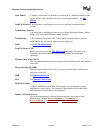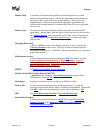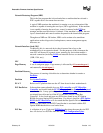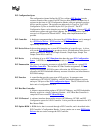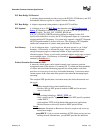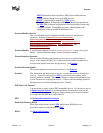
Extensible Firmware Interface Specification
Glossary-6 12/01/02 Version 1.10
FAT See File Allocation Table.
File Allocation Table (FAT)
A table that is used to identify the clusters that make up a disk file. File
allocation tables come in three flavors: FAT12, which uses 12 bits for cluster
numbers; FAT16, which uses 16 bits; and FAT32, which allots 32 bits but only
uses 28 (the other 4 bits are reserved for future use).
File Handle Protocol
A component of the File System Protocol
. It provides access to a file or
directory. Also called the EFI File Handle Protocol.
File System Protocol
A protocol that is used during boot services to obtain file-based access to a
device. It has two parts, a Simple File System Protocol
that provides a minimal
interface for file-type access to a device, and a File Handle Protocol
that
provides access to a file or directory.
Firmware Any software that is included in read-only memory (ROM).
Globally Unique Identifier (GUID)
A 128-bit value used to differentiate services and structures in the boot services
environment. The format of a GUID is defined in Appendix A. See Protocol
.
GUID Partition Entry
A data structure that characterizes a GUID Partition
. Among other things, it
specifies the starting and ending LBA of the partition.
GUID Partition Table Header
The header in a GUID Partition Table
. Among other things, it contains the
number of partition entries in the table and the first and last blocks that can be
used for the entries.
GUID Partition Table
A data structure that describes a GUID Partition
. It consists of an GUID
Partition Table Header and, typically, at least one GUID Partition Entry.
There are two partition tables on an EFI Hard Disk
: the Primary Partition Table
(located in block 1 of the disk) and a Backup Partition Table (located in the last
block of the disk). The Backup Table is a copy of the Primary Table.
GUID Partition A contiguous group of sectors on an EFI Hard Disk
.
Handle See Device Handle
.
Hardware Device Path
A Device Path that defines how a hardware device is attached to the resource
domain of a system (the resource domain is simply the shared memory, memory
mapped I/O, and I/O space of the system).




